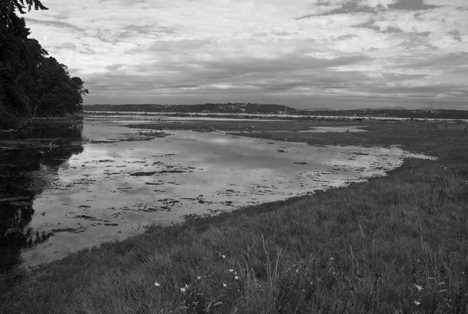Point Heyer — better known to Islanders as KVI Beach after KVI Radio purchased the Vashon sand spit and built a tower on it in 1936 — and Point Robinson — where a lighthouse stands — were named by Charles Wilkes of the American Exploring Expedition in 1841 after his quartermaster Henry Heyer and his crewmember John Robinson.
Both points were originally sand spits surrounding tidal salt marshes. In the ecology of Puget Sound, salt marshes are an important ecosystem for migrating birds, for a variety of sedges and grasses, and for the many species of shellfish, crab and fish that utilize the marsh’s shelter.
Both of these sand spit marshes developed as a result of thousands of years of deposits from the erosion of bluffs surrounding them.
These areas are called drift cells, and contain three elements: steep erosional bluffs, a transit zone of depositional beaches and a convergence zone or deposition area where sediments settle to create a sand spit.
Point Heyer is the convergence zone for two drift cells, one running south from Vashon Landing to the point, the other running along Ellisport from the west. Point Robinson is also the convergence zone for two drift cells, one running north along the east side of Maury Island from Piner Point, the other running along the north shore of Maury west from Portage.
The primary Point Heyer Drift Cell is 2.5 miles long and runs from Vashon Landing to Point Heyer (KVI).
It is “the only complete, intact, highly functioning drift cell in King County,” according to the U.S. Geological Survey.
Point Heyer (KVI) forms a 78-acre spit with three-quarters of a mile of beach and bluff and the only substantial salt marsh remaining in the mid-Puget Sound region.
Originally, Point Heyer and Point Robinson looked very similar. The salt marsh at Point Heyer (KVI) opens to the west and the salt marsh at Point Robinson opened to the north.
When the lighthouse service purchased the point to build a fog signal and then later a lighthouse, the salt marsh at Point Robinson was doomed.
The fog signal was built in 1885, and then in 1894 when an open light tower was built, the marsh began to disappear. A bulkhead was built across the marsh to retain fresh water for the steam fog signal, beginning the end of the marsh.
When the current lighthouse was built in 1915, the marsh was filled in to stabilize the point. This eliminated an important salt marsh ecosystem from the Island and created the meadow that today occupies the site of the original salt marsh.
The two photographs taken in late 2009 show the Point Robinson meadow and the Point Heyer (KVI) salt marsh as they are today. Together, these photographs show what the Point Robinson marsh would have looked like, had it not been filled.
Progress has its costs. The community gained a lighthouse and a park, but lost a major salt marsh ecosystem.
— Bruce Haulman is an Island historian. Terry Donnelly is a landscape photographer.



